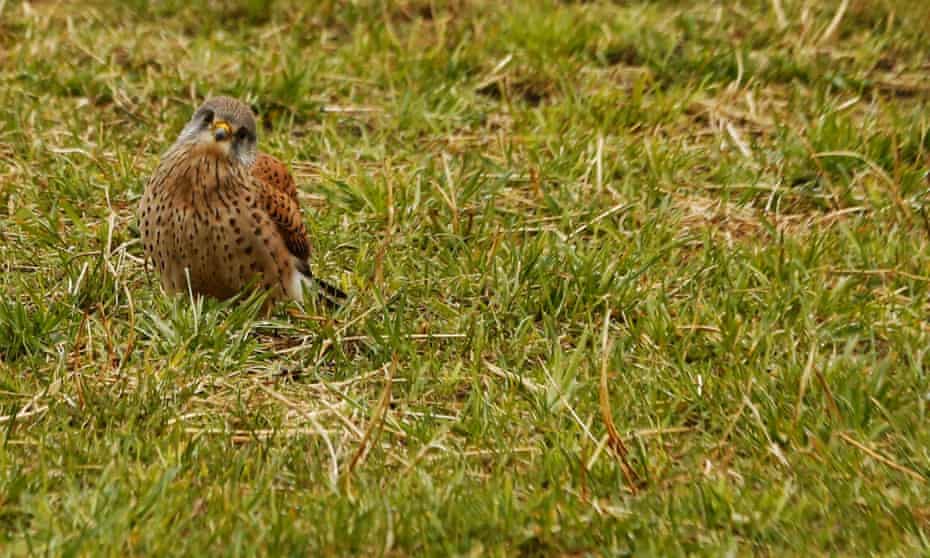Country diary: The call of the wild bird
Pulborough Brooks, West Sussex: I watch as a kestrel ‘yikkers’ before its mealtime hunt

Canada geese, wigeon, teal and shovelers are swimming and feeding in the pools. I stand underneath the nearby trees, behind a hedge, the cover allowing me to watch the birds from just a few metres away, and listen to their constant contact calls of soft whistles and honks.
Male shovelers are dipping their glistening green heads into the water and sweeping their wide bills from side to side. Two Canada geese act as sentinels, watching warily from raised ground while others feed. Near them, two Egyptian geese – the descendants of escaped birds, now breeding in the wild – are becoming agitated and start to shriek loudly. Thinking it’s my presence that’s disturbed them, I slink away to the next hide.
A flock of redwings lands in the trees alongside an open field. The small thrushes, recent arrivals from northern Scandinavia and Russia, flutter among the branches, flashing the orangey patches on their flanks and calling softly. As I enter the hide, I hear another call – a kestrel’s prolonged, high-pitched “yikkering” – coming from somewhere above the roof. I sit down and look out through the windows.
I don’t have to wait long. The kestrel flies low, in front of the hide, and lands on a large, round mound of earth which had been dug up during the work to clear the water channels on the reserve. I watch the little male falcon, its grey head and russet-brown back marked with black arrowhead shapes. It looks down intently at the dark turf at its feet. Suddenly, it hops from foot to foot down the side of the mound and lunges. It flicks up its hooked beak and swallows a large black beetle.
It continues to hunt in this way for about 15 minutes, before bounding back on top of the mound. It turns its head round in sharp movements, bobbing its head up and down – scanning its surroundings. It’s thought that these bobbing movements enable the bird to create a three-dimensional picture of the landscape, usually before flight. The kestrel launches into the air and flaps back over the hide, out of view. I hear its yikkering call again.